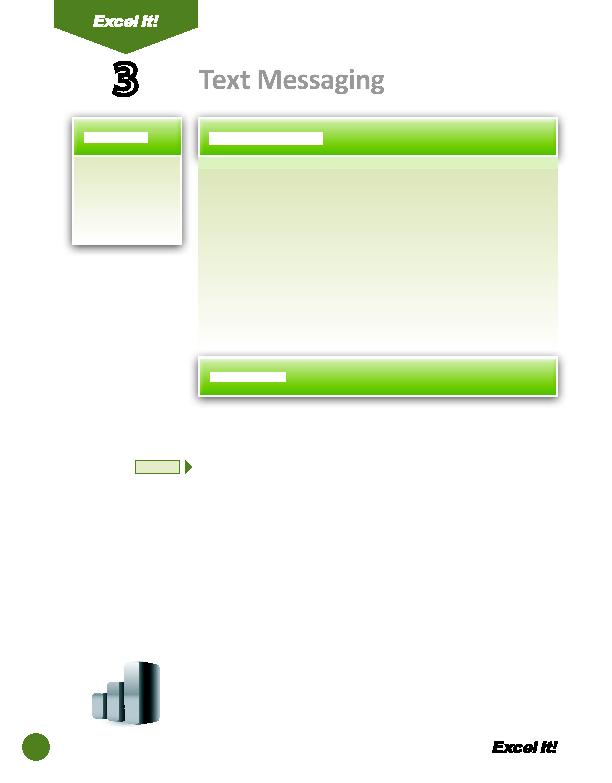
to other mobile phone users, has evolved into the number one preferred
user's ability to text people without being logged onto a computer. Texti ng
is also less intrusive and less expensive than a phone call. The Pew Research
Center's Internet & American Life Project Survey reports that 54% of
teenagers between the ages of 12 to 17 use text messaging as their primary
form of communicati on with friends, followed by 38% communicati ng by cell
phone, 33% face-to-face, 30% using landline phones, 25% logging onto social
network sites, 24% instant messaging, and only 11% using email. Fully 72% of
both teens and adults use text messaging.
The following acti vity illustrates how spreadsheets can be used to compare
the texti ng frequency of teens versus adults.
2. Use bold, italics,
2. Type the data as shown.
3. Apply the following text enhancements:
5. Carefully proofread your work for accuracy.
6. Save the spreadsheet as TEXT MESSAGING.
9. Print Preview and adjust the Page Setup so that the spreadsheet fi ts on one